Analysis for Welded Truss Connections for SR 104 Hood Canal Bridge
Retrofit and East Half Replacement
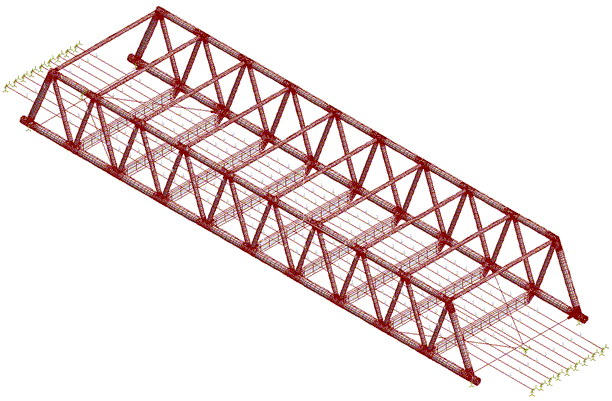 |
| The above bridge connects the land based SR 104 Highway to the floating section of the hood canal bridge. Thirty tubular connections were evaluated for 24 load cases of extreme loading and 21 load cases of fatigue loading using FEWeld per the criteria in API RP 2A-LRFD and AASHTO |
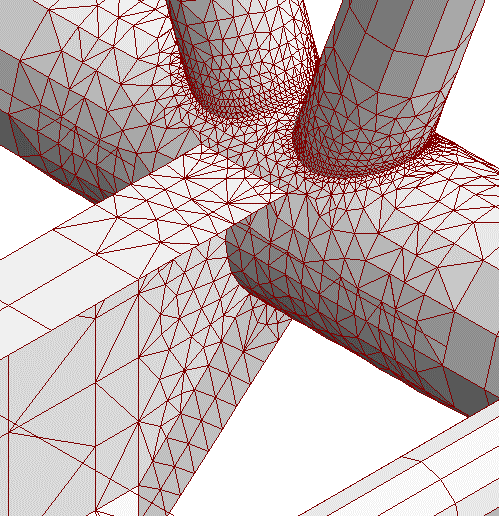 |
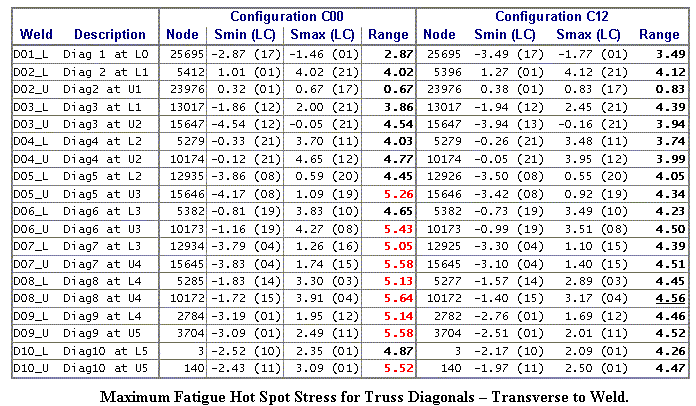 The Truss Diagonals were
critical for fatigue. Above is a summary of the computed stress
ranges. Configruation 00 was the original and C12 was the final.
Material thicknesses were adjusted between these, and the final
configuration actually ended up lighter than the original through
observing the interactions and sensitivities of the weld stress to both
the diagonal and node can thickness' and balancing those for the best
result while keeping the number of material thickness' to a minimum for
the structure.
All of the determination of the transverse stresses and summary across the load cases to determine the node with the maximum stress hot spot stress range was performed in FEWeld |
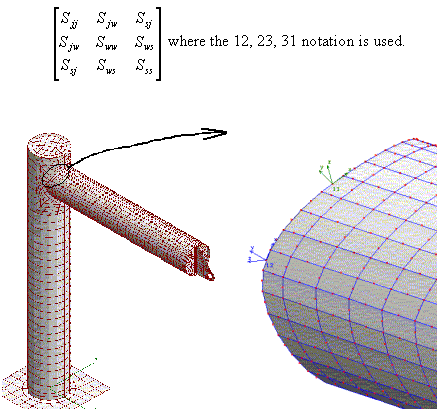 Depiction of local coordinate
systems calculated at each weld joint node in FEWeld so that stress
tensors are automatically aligned with the transverse, longitudinal,
and out of plane directions of the weld joint
|
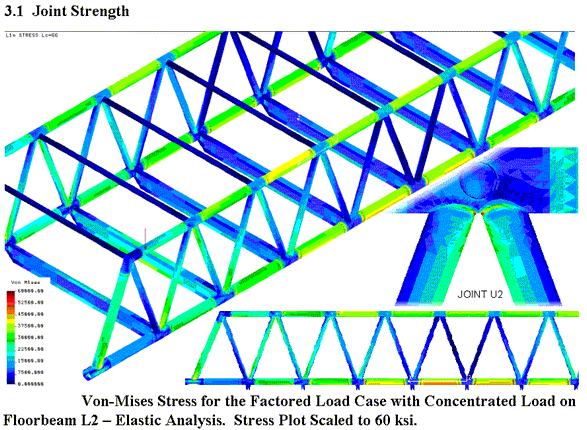 |
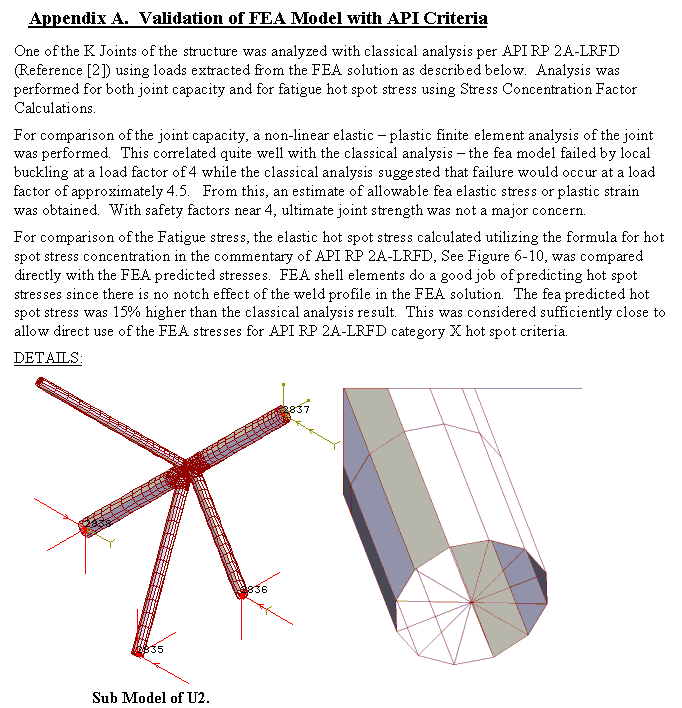 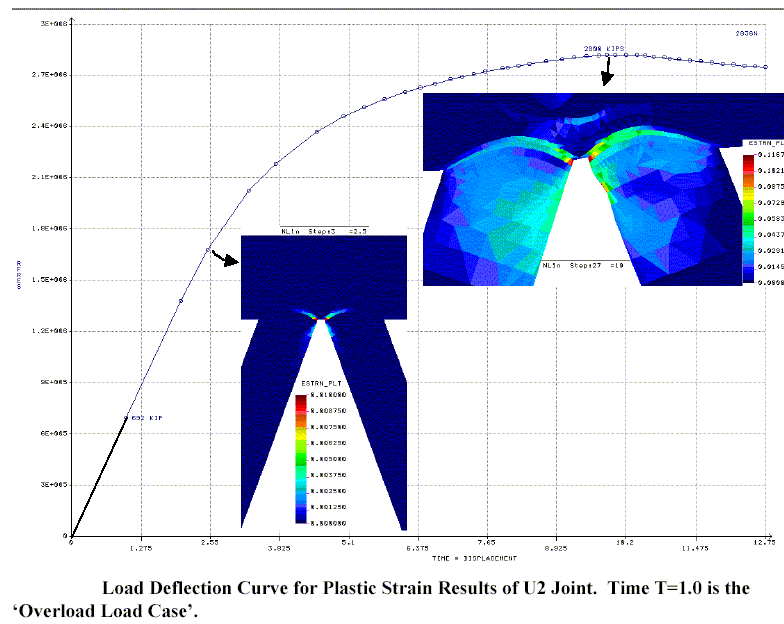 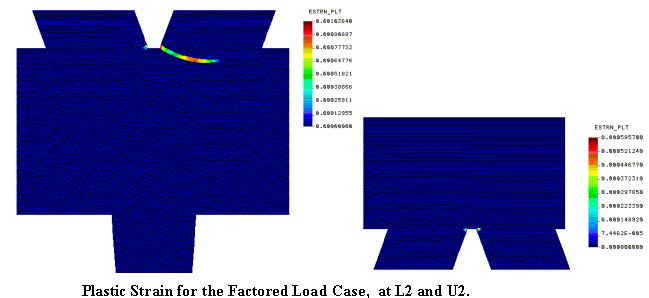 The nodes were more critical for
the extreme load cases - more distributed and greater plasticity, still
with a healthy margin against the limit state. The upper nodes
were used for the validation of the FEA model against the API
requirements because the lower nodes had the floorbeam connection
which, first, introduced most of the load that caused the higher
stresses, and second, is not a classical tubular joint and difficult to
analyze classically. The FEA model predicted that it has a margin
of 2 against the limit state given the results of the validation of the
upper node.
|
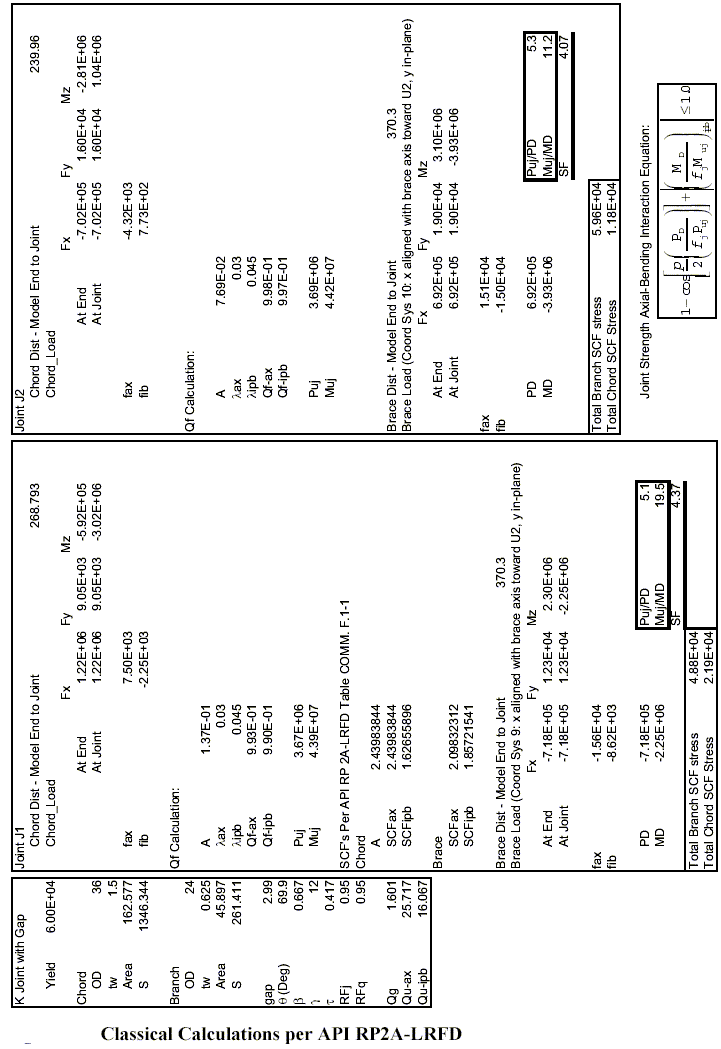 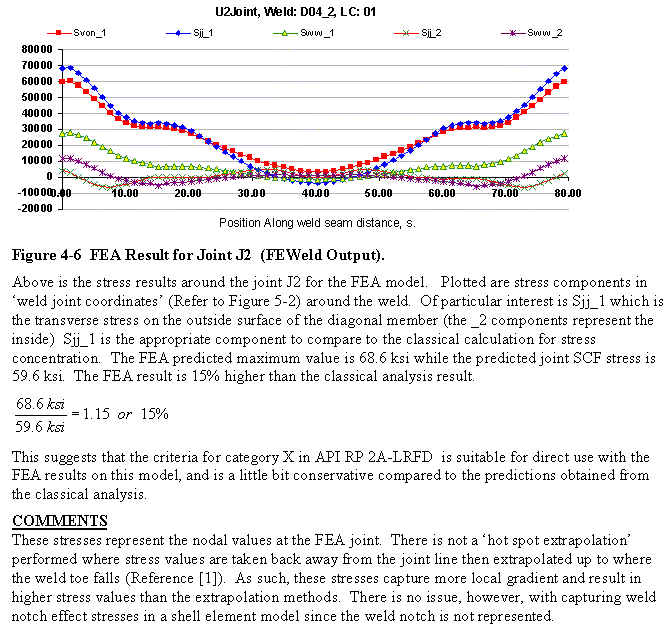 |